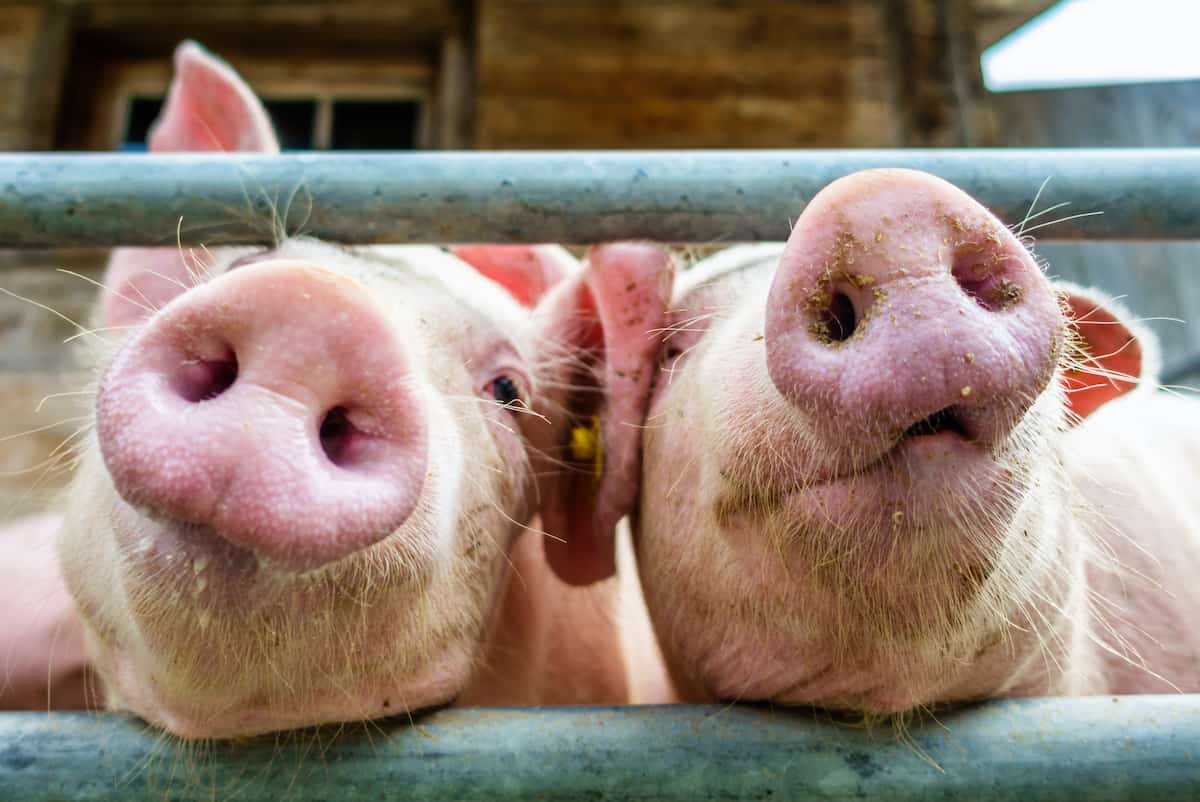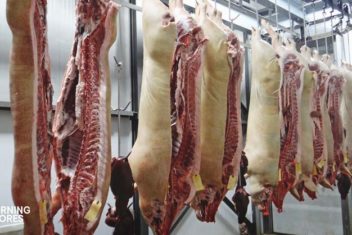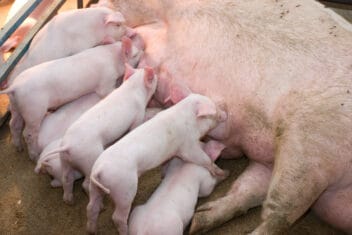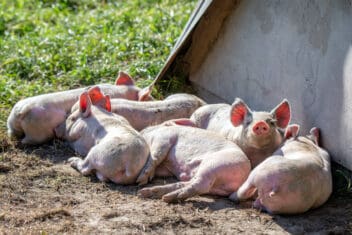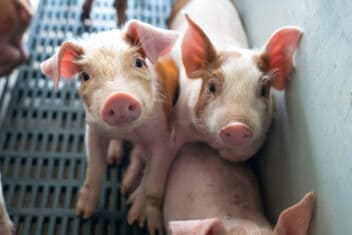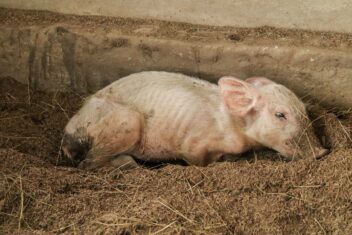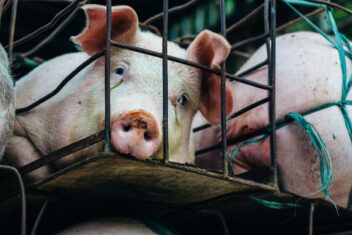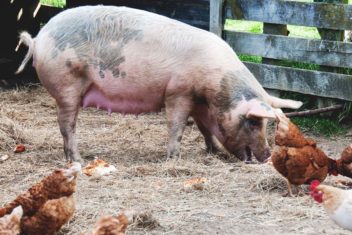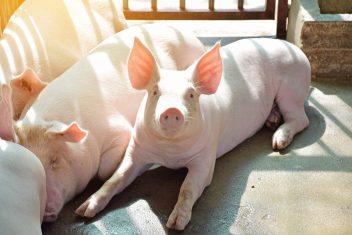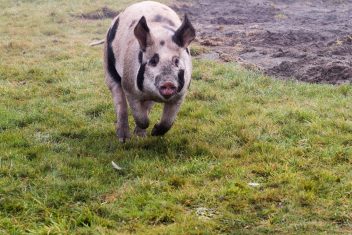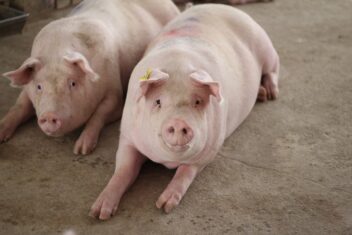It always bothers me when people comment on pigs being filthy, stinky animals.
On my farm, pigs are hardly the stinkiest creatures – if you’ve ever smelled my dog before he’s had a bath, you’ll quickly agree.
I’m joking, of course, but the reality is that pigs, when given plenty of room to roam around and express their “pigness,” as Joel Salatin would say, are not smelly animals.
They do a great job of managing their own manure and are not dirty as long as they are managed and housed properly.
Raising a herd of healthy, happy pigs comes down to housing and feeding them properly. When you’re housing pigs, there are a few key tips you should follow.
Minimum Space Requirements Per Pig
If you do a quick Google search on how much space is required for pigs, you’ll see 8 x 10-feet as the most commonly cited number.
However, is that enough?
In my experience, not really, 8-square feet is how much space is allotted to pigs in a confinement farm setting. About 80-square feet is recommended for a deep bedding style barn. If you’re going to raise your pigs on pasture, a quarter of an acre is recommended for up to 3 pigs.
Generally, and at the most elementary level, pigs require very little space. Whether you choose to house pigs inside or outside will play a huge role in how much space you need per pig. If your animals have access to outdoor space, no matter how little, they will be able to get by with less space in the barn.
When it comes to outdoor space, the amount of space you need will vary. You can raise a few pigs on a quarter of an acre or up to 10 pigs on a full acre with proper management.
Unfortunately, it is hard to give a cut-and-dry number on how many pigs you can raise per acre.
There are multiple considerations that come into play, such as how old and large the pigs are, how naturally inclined they are to root, based on the breed, and other determinations.
More Space is Better
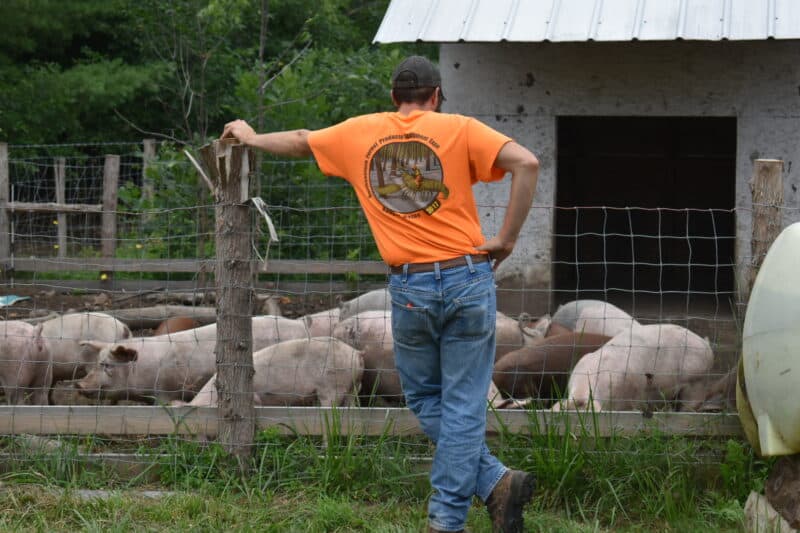
Less is not more when it comes to pigs. The more space you can give them, the more reduced your daily chores will be. The healthier your pigs will be, too. From personal experience, I believe that pork from pigs that had access to pasture and were able to roam tastes better.
Here are some tips on housing your pigs to keep them healthy and reduce potential headaches for you, too.
1. Manure Management
The more room you give your pigs, the less poop you’ll have to deal with. When you raise pigs in confinement, which is common for most large scale pig producers, you’re going to have to shovel out the barn on a weekly (or more often!) basis. What are you going to do with all that manure? Sure, you can compost it – but it’s just another chore to tack on to your list.
Even if you are raising your pigs on concrete floors that can be hosed off, you’re still going to have to deal with the poop somehow. That mixture of water and manure can be hazardous to the environment, so it needs special precautions – i.e. even more chores and expenses.
Why not raise your pigs outside? Yes, you’ll have to build fences. Yes, there will still be poop. However, the more space you give your pigs, the more spread out that poop will be.
We do still have to deal with manure during the winter months when our pigs are mostly inside a barn throughout the day. However, in the summer, our manure management chores are nonexistent.
We raise a dozen or so pigs on pasture and simply add fresh hay to the barn once a month or so. That’s it!
2. Diseases
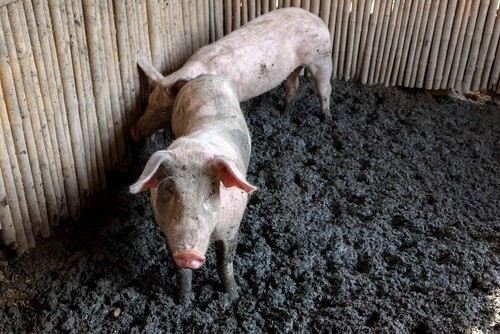
Less manure not only means less stink. It also means fewer flies, parasites, and diseases for you to deal with, too.
Diseases can be spread in several ways when it comes to pigs. Some diseases, like swine flu or other respiratory problems, are spread via direct contact from pig to pig. You can’t necessarily keep your pigs away from each other. They are social animals that like to be around other pigs.
However, keeping a bunch of pigs crowded in a barn is a surefire way to increase the spread of diseases.
Other diseases that are spread via manure (and the flies that tend to hang out in manure) include parasites, porcine epidemic diarrhea, and senecavirus. Remember, pigs are rooting animals, and they will happily root up areas where other pigs have defecated. The spread of internal parasites in crowded spaces is very common.
3. Less Fighting
Another benefit of giving pigs more space is less fighting. Pigs fight with each other when they are bored. Spreading them out is a great way to help them cool off! Do you know why most commercial pig farms dock the tails and clip the teeth of their piglets? So they don’t hurt each other in the barn.
We clip teeth on our farm too but it’s to protect our sow when the piglets are nursing, not because they’ll go after each other.
Giving your pigs adequate space can help reduce fighting on your farm. It can also prevent injuries, which can seriously harm your pigs and increase the spread of diseases, too.
4. Reduced Need for Intensive Management Practices
As I mentioned earlier, giving your pigs more space can result in a reduced need for more intensive management practices. Simply put, when pigs are given room to be outside and away from others, you won’t have to be as actively involved in preventing injury and diseases.
Some practices, in my opinion, are still necessary (like teeth clipping and castrating males).
However, there are some you can cross off your list when you provide your pigs with more space. Two that come to mind include the need for applying chemical dewormers and docking tails.
Other Pig Housing Essentials
That’s not to say that you can just give your pigs acres upon acres and expect them to thrive! More space is always recommended when raising pigs. That said, you do need to make sure your pig housing also has the following features.
1. Water and Feed Within Easy Reach
Water and feed are essential, and they should be within easy reach for both you and for the pigs. Automatic feeders and waterers are best if you want your pigs to gain weight at a rapid, healthy rate. Make sure these two things are always offered to your pigs. Keep the supply of both clean at all times.
Make sure the feed is kept in a covered container that can’t be flipped or maneuvered by the pigs. We use an automatic feeding trough that is heavy enough to have to be moved by a tractor. We can’t move it by hand. The pigs also cannot flip it, no matter how large they get. I do not recommend storing extra feed in the pig area, they’ll find a way to get inside of it.
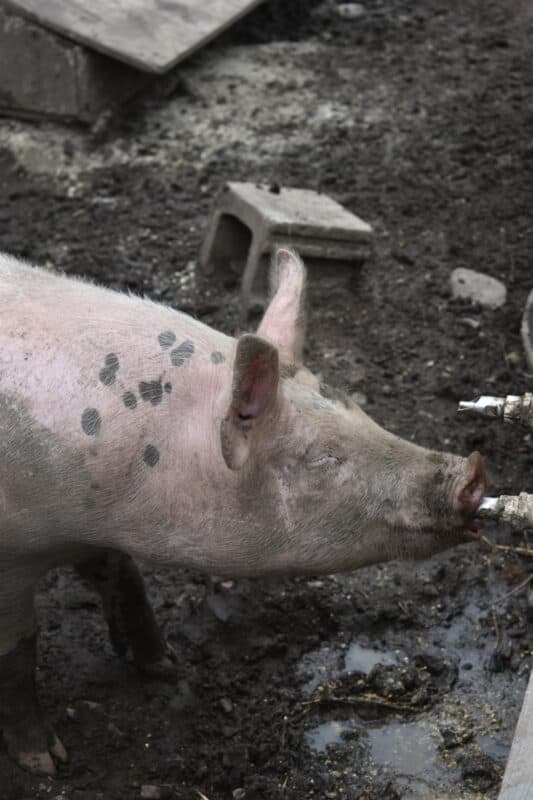
2. A Nesting Area
You will also want to provide your pigs with a “nesting area.” Not to lay eggs, like chickens, of course – but to sleep.
Keep the nesting area as far away from the water supply as you can. As you know, pigs are messy animals, and it can be frustrating to constantly have to replace the bedding material in the nest because your pigs keep getting it wet!
Throw some hay or other bedding into your barn and see what the pigs do with it. You can put a lot of time and effort into setting up a nesting area for them, but often, they’ll rearrange the bedding to their liking, anyway. Again, just make sure it’s not near the waterers.
3. A Pig-Selected Manure Area
Here’s a fun fact – pigs will often choose their own “bathroom space” in the barn when given the opportunity to do so.
Pigs don’t like to poop where they sleep, and will often set up a designated “poop spot” that’s on the opposite corner of where they are going to lie down at night. Give your barn plenty of room so that your pigs can pick this spot out for themselves.
It will also make it easier for you to clean, when the time comes for that, too. In fact, we have noticed that our pigs will often kick their dirty bedding out of the barn when they’re sick of having it inside!
4. Don’t Forget the Fences
Of course, you don’t want to neglect the pen itself when you’re figuring out how to house your pigs. Pigs are tough and curious, and they’ll continuously check and test a fence to see if it’s tight. Electric fencing tends to work best at keeping pigs confined, but whatever method you choose, make sure there are no gaps or spots where your pigs can get out.
Housing Pigs Indoors or Out
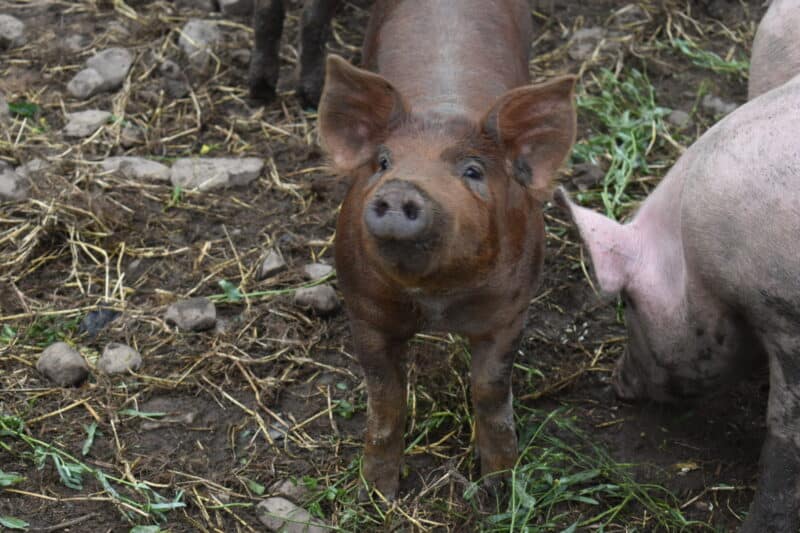
For some pig farmers, keeping pigs outside might just not be possible, due to management concerns, the weather, or other factors. That’s okay! While I always recommend raising pigs at least partially outdoors, you can raise healthy pigs inside a barn, too.
Just keep in mind that pigs do need fresh air, even in the winter. It should not be completely closed off but instead well-ventilated to help keep the air flowing – and your pigs healthy.
Follow these tips, and you should be able to raise healthy, happy pigs at any time of the year! Remember, the more space you have, the better off your hogs will be.
